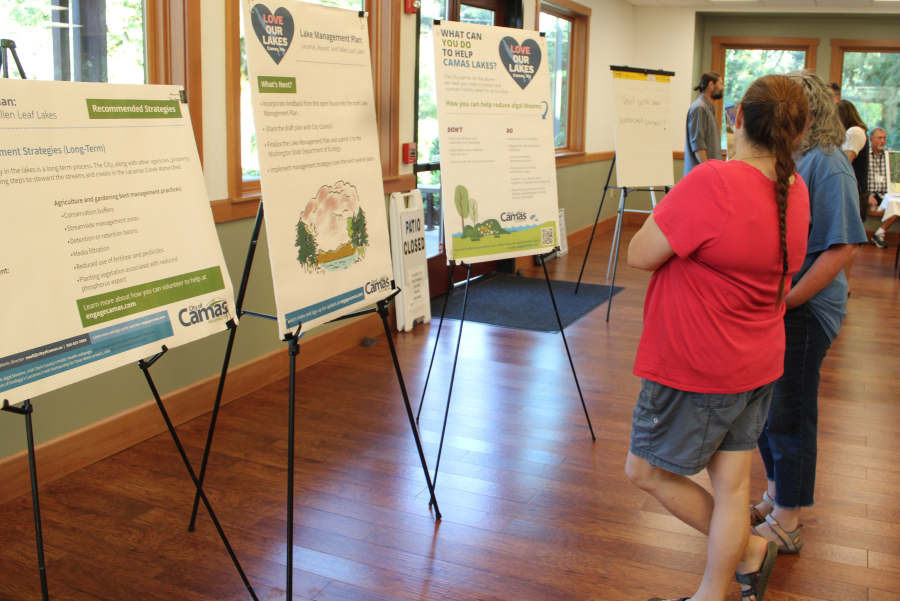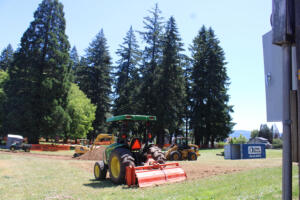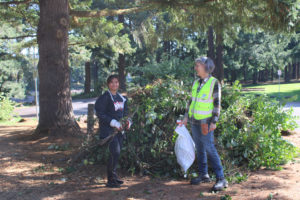The city of Camas is one giant leap closer to establishing a lake management plan for Lacamas, Round and Fallen Leaf lakes.
More than 100 people turned out to a city open house held Wednesday, July 12, at Lacamas Lake Lodge, to learn about the city’s water-testing data and discuss proposed solutions that would improve water quality and help prevent toxic algal blooms.
“A lot of people are asking about next steps … and what can be done to help improve the lakes right now,” said Camas Public Works Director Steve Wall during the July 12 open house.
The answer, said Wall, includes both short- and long-term strategies to improve water quality in the lakes as well as in the broader watershed area that reaches outside Camas’ city limits.
“I know many people are anxious to get something in place,” Wall told Camas City Council members on Monday, July 17. “Unfortunately, there’s no one-size-fits-all approach here.”




